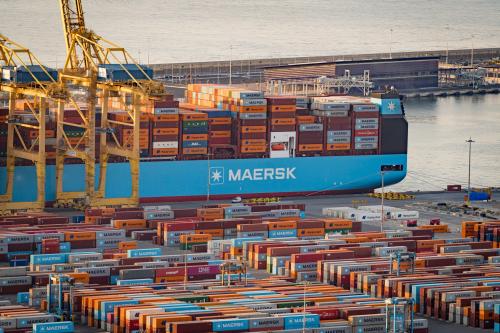The emerging metaphor for the Association of South East Asia Nations (ASEAN) is that of a swan: elegant, graceful and apparently motionless. But below the surface of the water, the swan paddles actively. Such was the Singapore’s Minister of Trade & Industry’s description of ASEAN’s protracted efforts to reach tariff-free status by 2015. ASEAN ministers met 41 times in 2011 to negotiate the elimination of tariff barriers and address non-tariff barriers. But despite multiple meetings, accomplishments in the trade area are few.
This may be explained by the expansion of ASEAN from the original 5 members in 1967 to the present 10, with economies ranging from the highly developed Singapore to the underdeveloped economy of Myanmar. Ministers of Commerce for Thailand, Malaysia, Singapore and Myanmar, as well as businessmen from Indonesia and the Philippines, gathered at the World Economic Forum (WEF), aspired to common standards for food products, drugs and electrical goods, but acknowledged that progress was slow. Instead, greater priority was given to confidence building measures, gradualism and consultation. These values recall ASEAN’s purpose in the mid-1960s as an association of like-minded anti-communist and stable nations. Meantime, the world has radically changed.
Currently, little “ASEAN consciousness” exists. Thailand, with full employment, dares to advocate the free movement of people. Singapore contemplates closer integration of financial markets, but unequal economic development within the Association makes cohesion difficult. For the first time in over twenty years, a representative of the government of Myanmar attended the WEF. He announced that Myanmar will participate in a single non-tariff market. Confidently, he advocated the geopolitical advantages of a country rich in mineral resources and poised between China and India. The Minister was either a gambler, or capable of predicting the next stage in Asian trade.
ASEAN’s graceful swan now confronts the fast moving policy towards a Trans Pacific Partnership (TPP). TPP aims for free trade and finds urgency in Washington’s tilt toward Asia. Thus, ASEAN’s swan meets the rambunctious goose. The ministers at Davos expressed uncertainty on how to engage. They expressed reluctance to compete with outsiders. Lacking confidence to confront on their own, they suggested that the 6 friends of ASEAN, specifically Japan, act as a bridge between ASEAN and the emerging TPP.
This reluctance was strange given that Singapore is one of the founders of TPP and most ASEAN members are also members of the Asia-Pacific Economic Cooperation (APEC). Also, reference to Japan may have anticipated its membership in TPP, but to date the Japanese government has not made a firm commitment to join. The explanation is to be found in the desire of most ASEAN leaders to continue measured integration without TPP pressure to liberalize trade faster. The swan moves slowly and not always forward, but above all it seeks to avoid turbulence. The goose may dislocate this pattern.
Washington may not acknowledge this anxiety, but President Obama, unlike his predecessor, has attended two ASEAN summits. His commitment should demonstrate U.S. willingness to mediate and ensure that there is plentiful space within Asia for both birds to swim and prosper. That space now includes Myanmar.
The Brookings Institution is committed to quality, independence, and impact.
We are supported by a diverse array of funders. In line with our values and policies, each Brookings publication represents the sole views of its author(s).



Commentary
Will ASEAN be Swallowed Up by the Trans-Pacific Partnership?
January 31, 2012